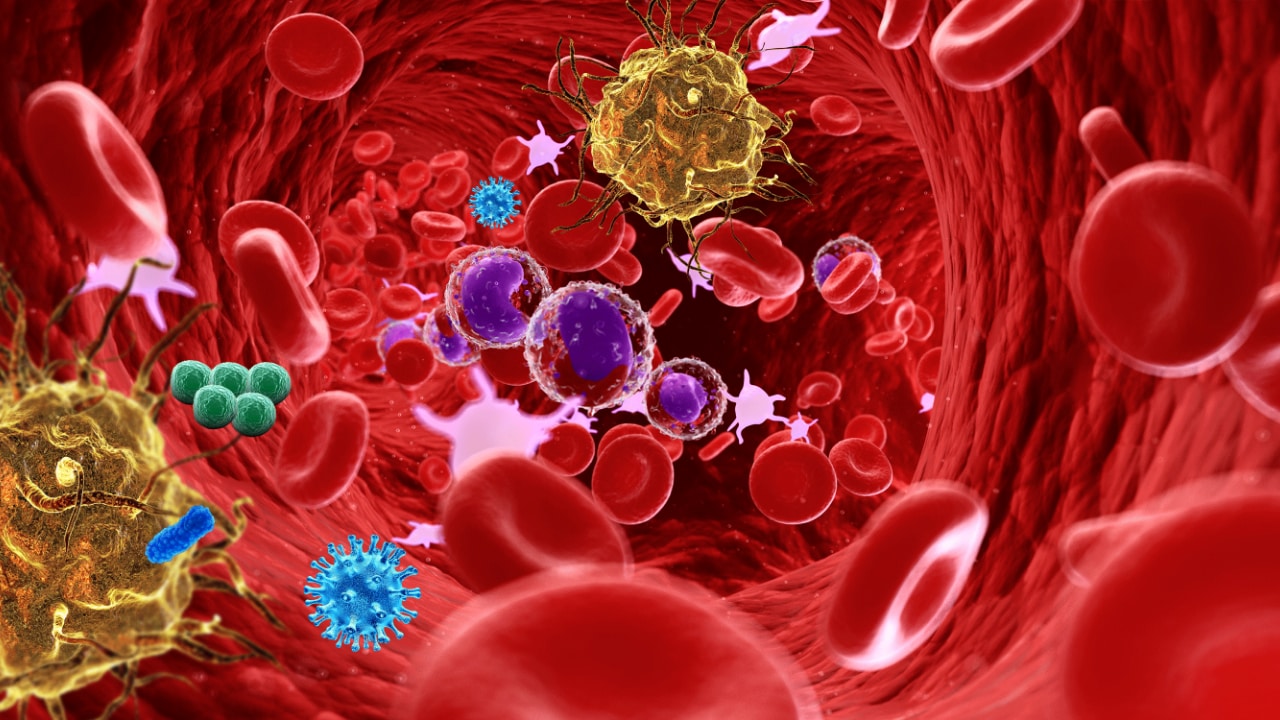The Future
Combined Panels or Scores
Given the complexities of the sepsis response, the different times at which individual biomarkers are elevated, and the fact that most, if not all, markers currently available or under research are also raised in other inflammatory conditions, it is unlikely that any single marker will ever be of use to diagnose sepsis. Combinations or panels of biomarkers, potentially combined with clinical signs and other markers of sepsis, are more likely to be able to guide diagnosis or treatment, or assist in prognostication.[94] This approach is already widely used in daily practice as physicians regularly combine the results of several individual tests to help diagnose and prognose. However, which combinations are most predictive and how the different tests can be best combined are challenges for the future. Results from studies assessing multiplex panels of cytokines have been discussed above;[54–56] here we will mention some of the other systems that have already been proposed.
Peres Bota et al.[95] devised an Infection Probability Score using logistic regression techniques. The score incorporates four routinely used signs of sepsis (temperature, heart rate, respiratory rate, white blood cell count), CRP concentrations and the SOFA score. Using a cutoff value of 14 points, the Infection Probability Score had a positive predictive value for infection of 53.6% and a negative predictive value of 89.5%. Patients with a score of less than 14 had only a 10% chance of having an infection. Other groups have similarly developed composite scoring systems for infection. In a pilot study, neural networks using the levels of expression of IL-1β, -6, -8, -10, TNF-α, FasL and CCL2 mRNA correctly predicted development of sepsis in an average of 83% of patient cases between 4 and 1 days before clinical diagnosis with high sensitivity and specificity (91 and 80%, respectively).[96] Andaluz-Ojeda et al.[97] used a score combining serum levels of IL-6, -8 and -10, to predict outcome in patients with severe sepsis or septic shock; the HRs for mortality with the combined score were two- to three-fold higher than those obtained with the individual interleukin values. Kofoed et al.[84] reported an area under the curve for prediction of a bacterial cause of inflammation was 0.88 (95% CI: 0.81–0.92) for a composite score combining measures of suPAR, sTREM-1, macrophage migration inhibitory factor, CRP, PCT and neutrophil count, significantly larger than the area under the curves of any of the individual markers. Gibot et al.[98] produced a 'bioscore' consisting of plasma concentrations of sTREM-1 and PCT and the neutrophil expression of CD64. The bioscore had better predictive value for infection than any of the biomarkers alone.
Proteomics, Genomics & PCR
New proteomic, genomic, multiplex and microarray techniques are being used to identify potential biomarker candidates that could be used to diagnose, guide therapy or evaluate prognosis in patients with sepsis, as they are already used in some types of cancer.[99] Importantly, these new technologies enable the expression of multiple proteins or genes to be evaluated simultaneously, moving us away from the individual biomarker concept into a model in which patterns or profiles of gene and/or protein expression are used to identify and follow sepsis. Data are already available supporting the potential of these techniques. Using microarray technology with 54,675 transcripts and gene-expression profiling on peripheral blood mononuclear cells, Tang et al. identified a molecular signature of 138 genes that could differentiate between patients with sepsis and SIRS, with 91% accuracy in the development cohort and 80% accuracy in a validation cohort of critically ill patients.[100] Using similar techniques in an equine model of sepsis, Sutherland et al. developed a panel of 42 genes linked to innate and early adaptive immune function/activation pathways. This panel was shown to discriminate between non-infected postsurgical patients and patients with sepsis with an AUROC of 0.92 ± 0.0586.[101]
Molecular methods based on PCR technology have also been developed to help in the diagnosis of infection.[102] Blood cultures take several days to process and in many critically ill patients with sepsis, cultures will be negative. By being able to amplify specific regions of bacterial DNA, these PCR probes allow minute traces of DNA to be detected, providing positive results when traditional cultures are negative and giving a much more rapid result. Several such tests are now commercially available in Europe. For example, SeptiFast (Roche Diagnostics, Mannheim, Germany) and VYOO (SIRS-LAB, Jena, Germany) enable identification of 25–41 of the most common bacterial and fungal pathogens; SepsiTest™ (Molzym, Bremen, Germany) uses an all-pathogen approach to detect fungemia or bacteremia. In 391 patients with suspected sepsis, the SeptiFast assay was shown to have better specificity for pathogen identification (100 vs 94%; p = 0.005) and a higher positive predictive value (100 vs 75%; p = 0.005) than blood cultures.[103] In 187 patients with SIRS, sepsis or neutropenic fever, the SepsiTest had a diagnostic sensitivity and specificity of 87.0 and 85.8%, respectively, compared with blood cultures.[104] However, some studies have reported false-negative or -positive results with these tests,[105,106] and identification of resistance patterns, an important consideration for appropriate antimicrobial prescription, is also limited with present assays. Although these tests may be of use in diagnosing the presence of infection, further studies are needed to identify whether they can effectively guide initial antimicrobial therapy with an impact on patient outcomes.
Expert Rev Anti Infect Ther. 2013;11(3):265-275. © 2013 Expert Reviews Ltd.









